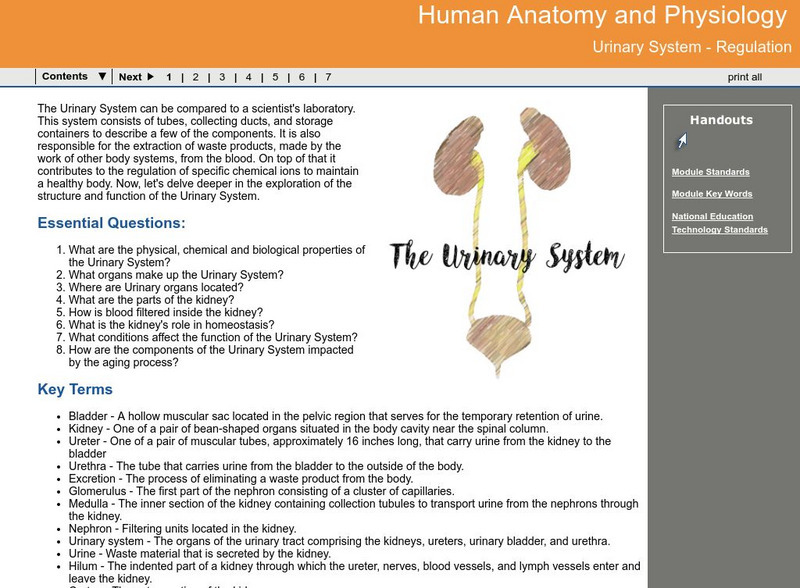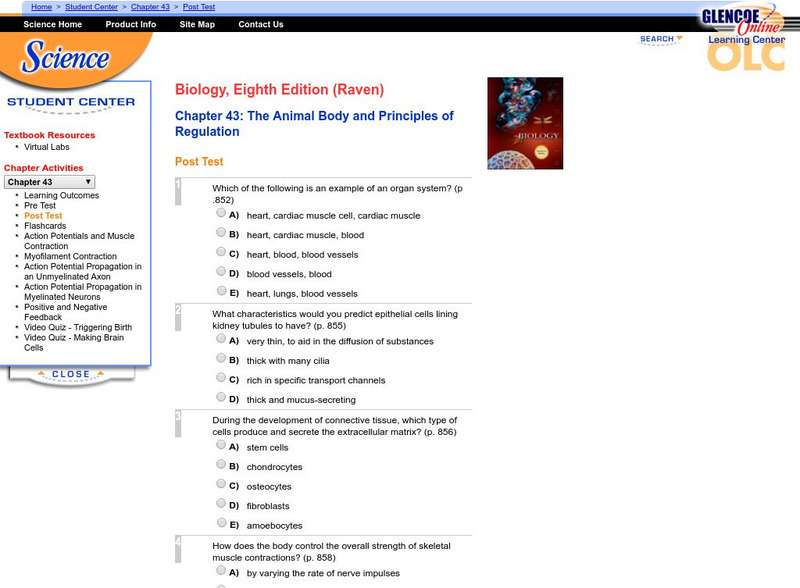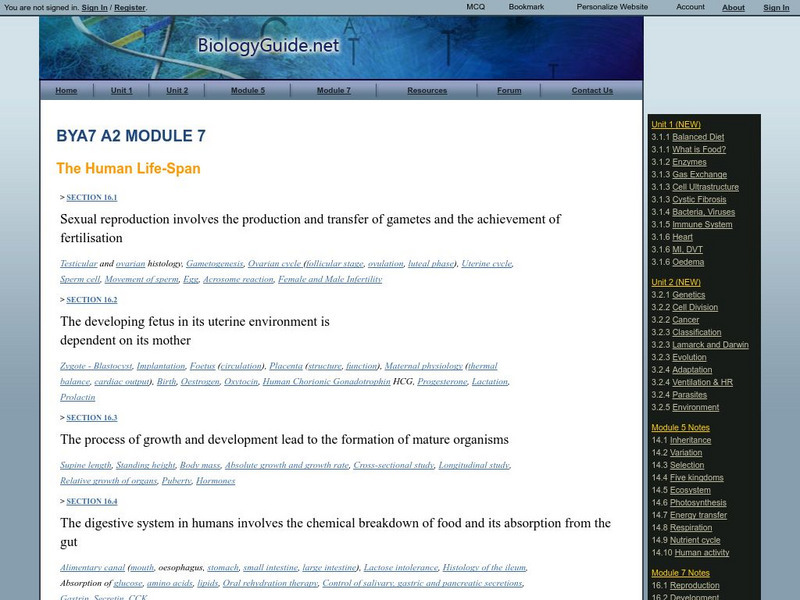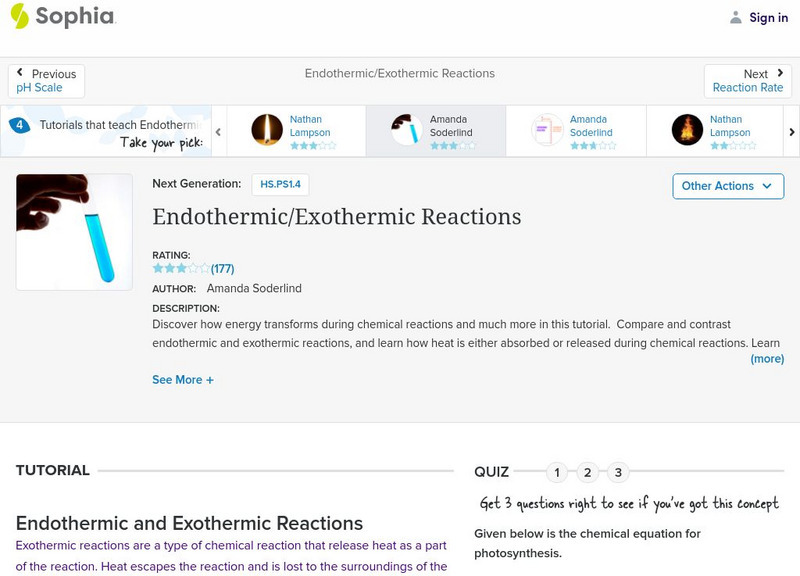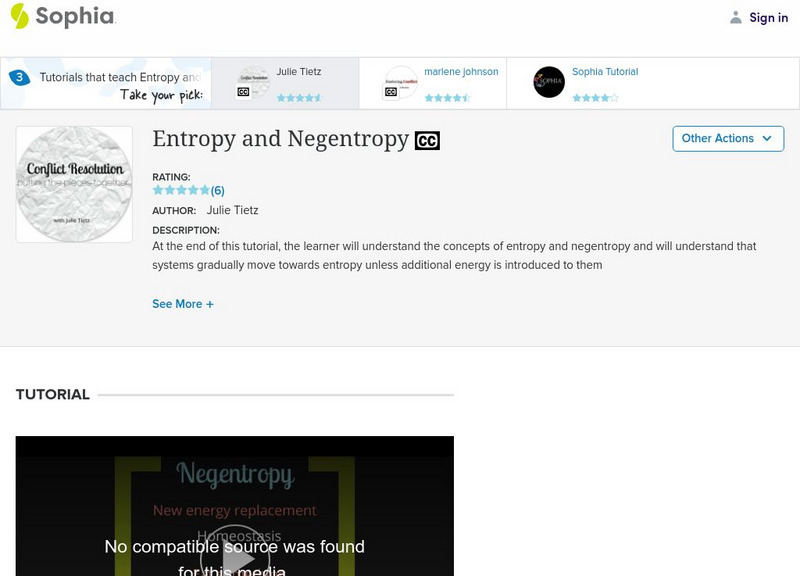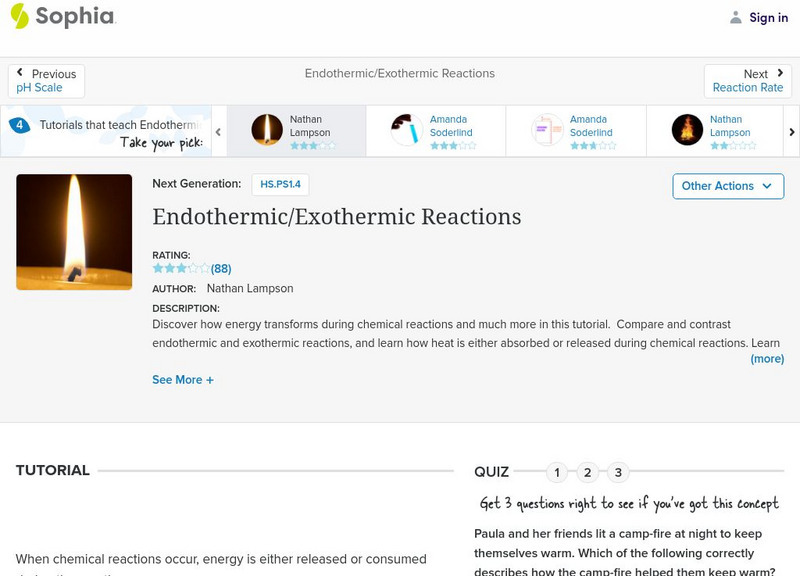PBS
Pbs Learning Media: Fever!
This video describes the role of the brain in regulating body temperature and how sometimes fever is employed to fight off infection.
Georgia Department of Education
Ga Virtual Learning: Anatomy and Physiology: Urinary System Regulation
By completing this module, students will discover how the liver, kidneys, ureters, bladder, and urethra all work together to maintain homeostasis in the human excretory system.
OpenStax
Open Stax: Anatomy and Physiology: The Urinary System and Homeostasis
Students learn how the functions of the urinary system and other systems of the human body are interrelated.
The Association of the British Pharmaceutical Industry
Abpi: Homeostasis: Kidneys and Water Balance
A complete, self-paced lesson on homeostasis in the human body, focusing on kidney function. Students work their way through illustrated and animated tutorials, and answer review questions along the way. There is a self-checking quiz at...
eSchool Today
E School Today: Your Revision Notes on the Characteristics of Living Things
Discusses the five characteristics that living things have and nonliving things do not.
McGraw Hill
Glencoe: Biology: The Animal Body and Principles of Regulation Post Test
Students can test their knowledge of the principles of regulation with this seven question multiple-choice quiz.
McGraw Hill
Glencoe: Biology: The Animal Body and Principles of Regulation Pretest
Students have the opportunity to take this five question pretest to assess their knowledge of the principles of regulation in the human body.
Sumanas
Sumanas Inc: Life: The Science of Biology: The Mammalian Kidney
Use this tutorial to help supplement your learning about how the kidneys work.
Scholastic
Scholastic: The Awesomely Evolved Human Brain
This lesson reinforces comprehension of key facts and concepts in the student article "The Awesomely Evolved Human Brain." Students will understand that the brain's reward system has evolved to help ensure the survival of the species....
National Institute of Educational Technologies and Teacher Training (Spain)
Ministerio De Educacion: La Formas De Organizacion De La Vida
In this unit you will learn about the origin of the cells and their differences. It includes 15 interactive activities.
Open Curriculum
Open Curriculum: Excretory System
This article helps students define homeostasis and excretion, and why they are necessary for life.
Open Curriculum
Open Curriculum: Homeostasis and Regulation in the Human Body
This article helps students identify the process by which body systems are regulated so that they remain stable.
Other
Biology Guide: Human Life Span
Students learn about the human life-span. Some topics investigated in the tutorial are reproduction, nervous system, skeletal muscle, and homeostasis.
University of Hamburg
University of Hamburg: Homeostasis Some General Principles
An online, college-level textbook about homeostasis. Find out what it is, and how this function allows us to stay alive.
Sophia Learning
Sophia: Endothermic/exothermic Reactions: Lesson 4
This lesson explains the difference between endothermic and exothermic chemical reactions. It is 4 of 4 in the series titled "Endothermic/Exothermic Reactions."
Sophia Learning
Sophia: Endothermic/exothermic Reactions: Lesson 1
This lesson explains the difference between endothermic and exothermic chemical reactions. It is 1 of 4 in the series titled "Endothermic/Exothermic Reactions."
Sophia Learning
Sophia: Entropy and Negentropy: Lesson 2
At the end of this tutorial, the learner will understand the concepts of entropy and negentropy and will understand that systems gradually move towards entropy unless additional energy is introduced to them. It is 2 of 3 in the series...
Sophia Learning
Sophia: Homeostasis: Lesson 1
This lesson will explain the process of homeostasis and how it allows organisms to maintain a stable internal environment. It is 1 of 10 in the series titled "Homeostasis."
CK-12 Foundation
Ck 12: Principles of Biology
[Free Registration/Login may be required to access all resource tools.] Explains the four principles that unify biology - cell theory, gene theory, homeostasis, and evolution.
Sophia Learning
Sophia: 7 Characteristics of Life: Lesson 2
This lesson will introduce the 7 characteristics of all living things. It is 2 of 4 in the series titled "7 Characteristics of Life."
Sophia Learning
Sophia: Endothermic/exothermic Reactions: Lesson 2
This lesson explains the difference between endothermic and exothermic chemical reactions. It is 2 of 4 in the series titled "Endothermic/Exothermic Reactions."
CK-12 Foundation
Ck 12: Biology: Kidneys
[Free Registration/Login may be required to access all resource tools.] Describes the roles of the kidneys in homeostasis.
Famous Scientists
Famous Scientists: Claude Bernard
Read about Claude Bernard, one of the first to suggest the use of blind experiments to ensure the objectivity of scientific observations.
OpenStax
Open Stax: Calcium Interactions of the Skeletal System and Other Organ Systems
This site provides a plethora of information regarding calcium homeostatis and interactions of the skeletal system. Disorders such as hypocalemia and hypercalcemia are discussed.



